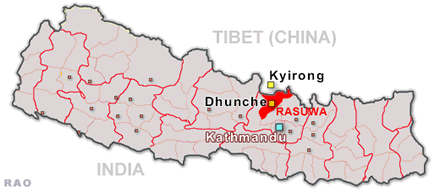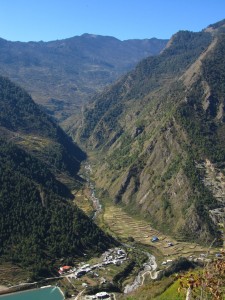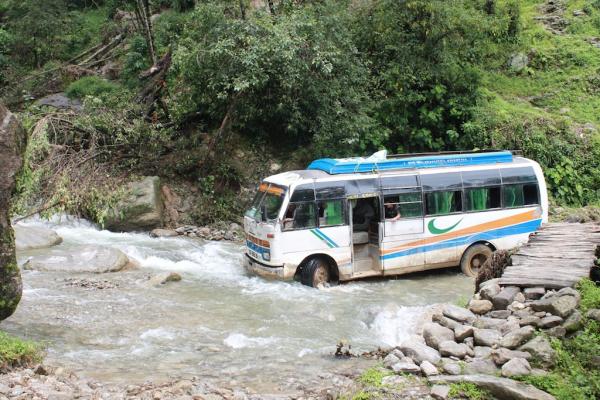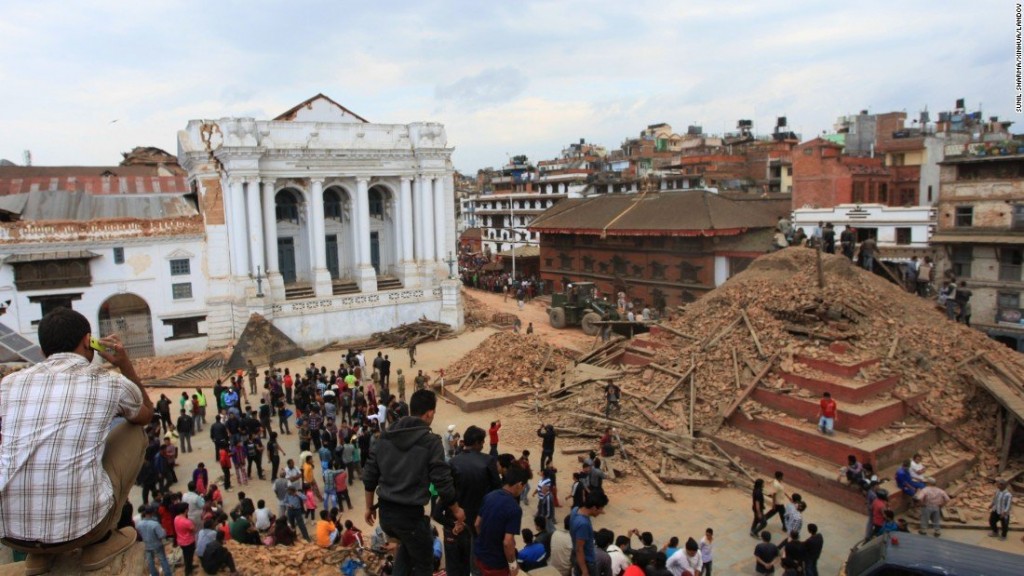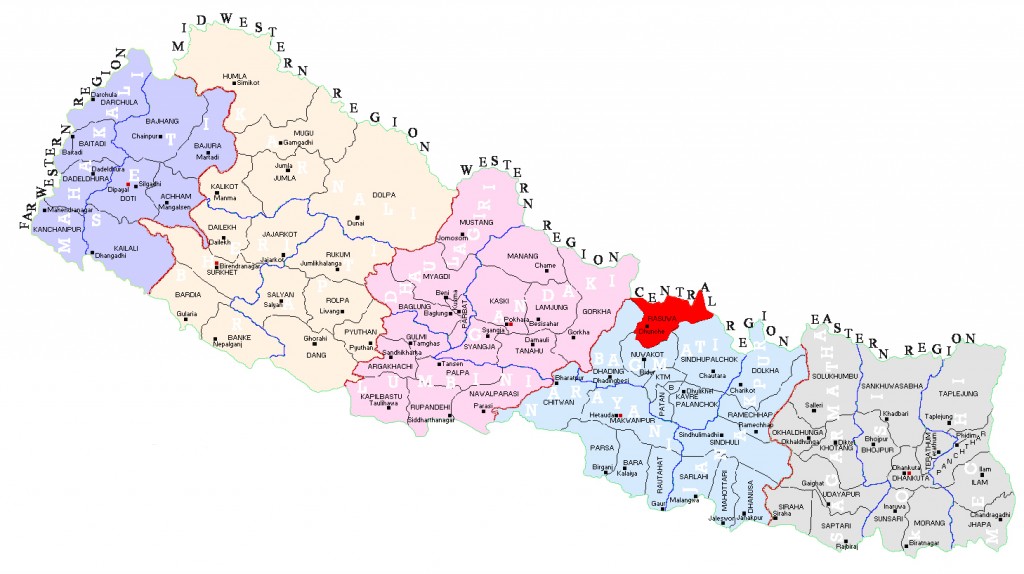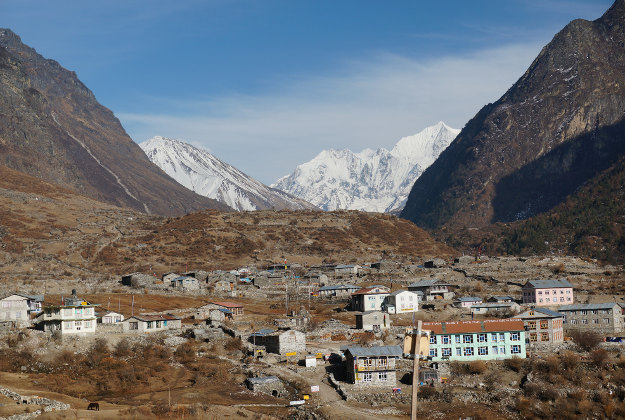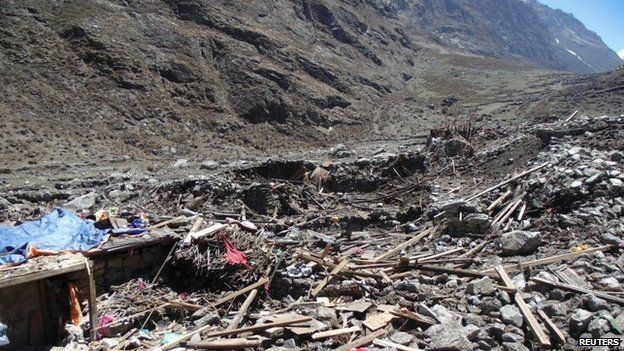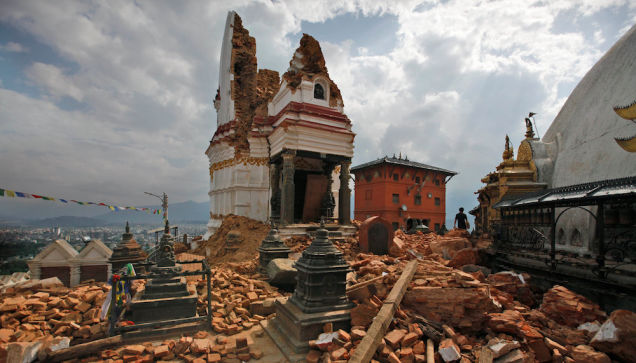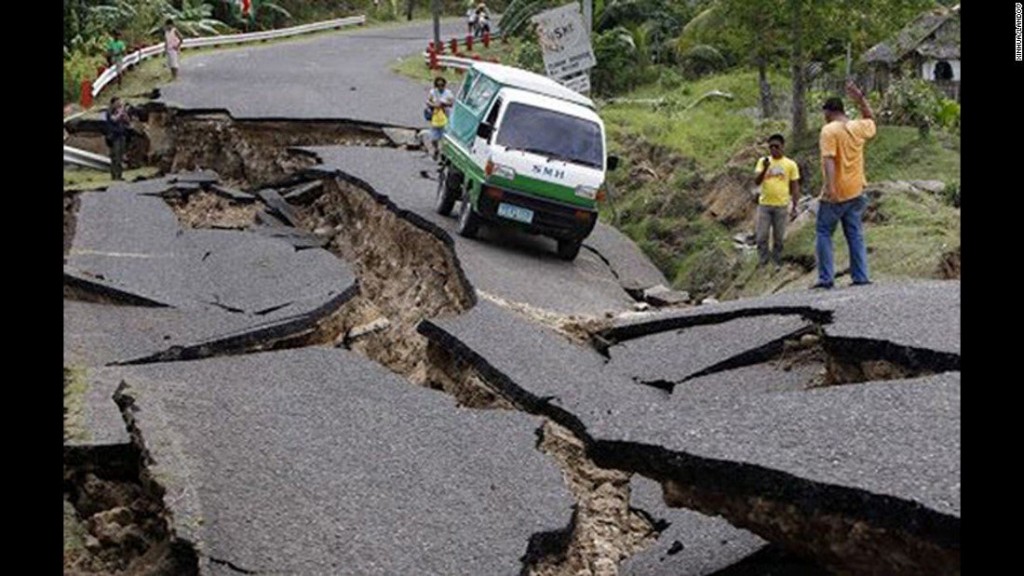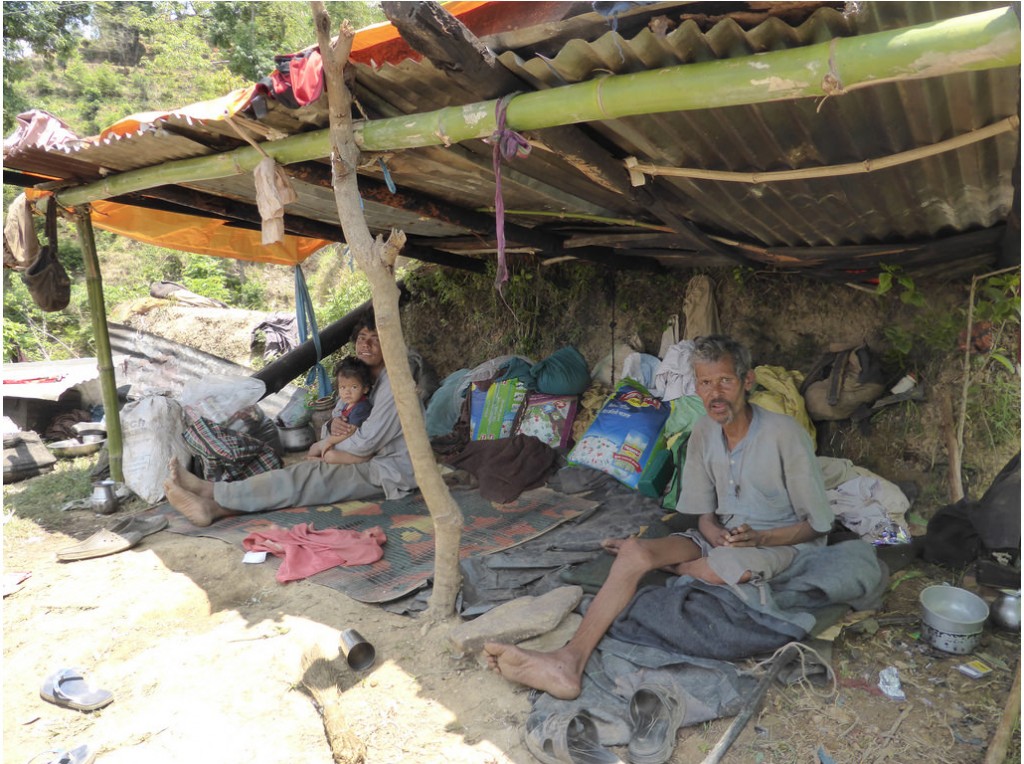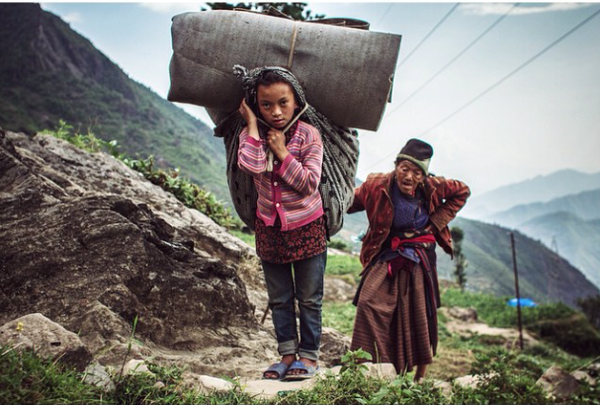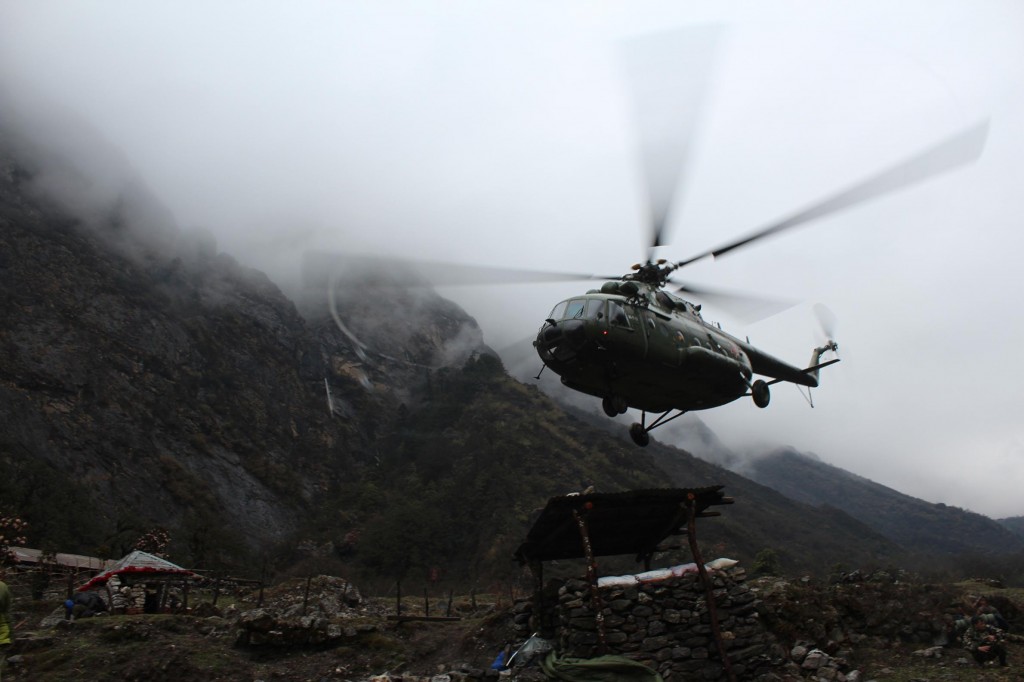ABSTRACT:
The April earthquake in Nepal affected the entire country immensely. Rebuilding damaged infrastructure has proven to be an intricate challenge, especially for rural areas. For example, Rasuwa District is one of the 75 districts of Nepal and is the smallest of 16 districts in the Himalaya region. Given its location and its proliferation of mountains, Rasuwa’s economy depends on tourism. It is one of the nearest trekking destinations from Kathmandu and is known to have a unique combination of natural beauty and cultural riches. However, the April 25th earthquake killed 430 people and injured 753. Most of the deceased were tourists living in the guesthouses who were killed in an avalanche that buried most of Langtang village.
Due to ongoing collisions between tectonic plates that have historically caused the country’s deadliest tremors, Nepal is extremely prone to earthquakes, landslides and avalanches. Clearly, there is a need for sustainable and structurally sound buildings that will not crumble as easily in future natural disasters. The example of Rasuwa District can be utilized as a microcosm of the geographical and infrastructure realities of the larger country of Nepal, and, specifically, as a reflection of the engineering, infrastructure, and design challenges that Nepal’s rural districts are currently facing.
Background:
In order to fully understand the importance of rebuilding rural Nepal after the earthquake, one must take into consideration not only the damage done by the recent earthquake but also: Nepal’s history of poor infrastructure, the importance placed on cultural and traditional building methods, its dependency on tourism, and its geographical realities.
Infrastructure history:
- Development of road infrastructure in Nepal did not start until the advent of democracy in 1950. Prior to the earthquake, Nepal had around 14,000 Km of roads, which is 6.93 Km of road per 100 Km of land. However, many of these roads, especially in rural districts, are made up of gravel or dirt and are poorly maintained, causing them to only be passable in good weather.
- While there is some basic health infrastructure in place, most of it is concentrated in the cities. Nepal has roughly 130 hospitals/clinics and the ratio of doctors to patients is .21.
- Finally, compounding the lack of general infrastructure development is a history of abject poverty and economic underdevelopment. For example, even before the earthquake there was a lack of access to improved sanitation infrastructure, especially in the rural districts.
High level of importance placed on culture/traditional buildings methods:
- Traditional building methods are especially common in the rural villages of Nepal. Overtime, traditional and cultural building methods have remained largely unchanged, universally relying on materials that are relatively easy to find and reuse. The main building materials include brick and mud mortar.
- The structural components such as doors and window frames are generally made from wood. Furthermore, private buildings are typically three stories tall, with a load bearing central wall, and a roof made of tile.
Tourism:
- Tourism is the largest industry in Nepal, bringing in 800,000 tourists in 2012
- Rural districts in Nepal rely on their geographic features to attract tourists and to generate some form of economic revenue. Consequently, the main economic infrastructure has become a network of villages and trekking houses and is entirely dependent on tourism.
- In addition to reliance on geographic features, Nepalis also turn to their cultural and religious buildings as a means of attracting tourism. As a result, tourists have developed expectations of a Nepalese traditional architectural aesthetic (created by the building materials listed above), thereby adding to the importance placed on cultural building techniques.
Location, population, access to major cities, transportation:
- Nepal is a mountainous country susceptible to both earthquakes and landslides caused by monsoon rains. Rural, mountainous villages are especially susceptible to natural disasters because of their location.
- Nepal is difficult to access from other countries, as it is landlocked and has no ports. The best way to access many areas of Nepal is traveling by air. Nepal has a well developed network of air travel, as airports operate in 44 out of 75 districts and an international airport is located in Kathmandu. One of the few reliable ways to enter Nepal on the ground is via the road route from Kathmandu to India.
- Due to better road development in urban areas, it is much easier to access major cities like Kathmandu, Pokhara, Bharatpur than it is to access rural villages. The majority of motor vehicles are concentrated in Kathmandu valley and are extremely rare in rural Nepal.
Significance:
Nepal is extremely prone to natural disasters such as earthquakes, landslides, monsoons, and avalanches. Scientists are already predicting that another massive earthquake will strike soon. Rural districts and villages are especially vulnerable to natural disasters due to their location. Rebuilding rural Nepal in a sustainable and stable way is crucial for improving aspects of everyday life ranging from public health to economic development.
Traditional building materials and methods are not sustainable, yet they are critically important.
- The traditional building styles and materials discussed in the background section are not resistant to the array of natural disasters that Nepal faces. While they are easily accessible resources, they are easily destroyed as evidenced in the film above.
- Meshing modern building methods and materials with traditional methods is significant for the health and safety of the Nepalese people. Rebuilding using traditional methods is vital for mental health, especially in villages which might have been partially or totally destroyed, such as Langtang village. The return of familiar buildings/methods brings a sense of returning to normalcy after the disaster. Click here to learn more about mental health after the quake.
- This meshing of building methods is also vital to the tourism industry and the economic security of Nepal. Without the network of guesthouses and trekking shelters, as well as the unique cultural and religious buildings, the little economic infrastructure that rural Nepal has will collapse.
Access to care and foreign aid is reliant on road infrastructure.
- Improving and repairing the road infrastructure of Nepal is a basic step that needs to be taken in order to improve access to care in rural districts. While there is generally a low level of health infrastructure in place in Nepal as a whole, there is almost none in rural districts.
- Developing infrastructure in the rural districts is also vital to getting aid to these areas. As mentioned in the background section, most of the roads in Nepal are concentrated around larger cities like Kathmandu. Rural villages are only accessible by gravel/dirt roads and only in good weather.
Core Challenges:
Avoiding the initial pitfalls of rebuilding Nepal is critical to reestablishing normalcy and improving infrastructure in Nepal going forward. When assessing the current state of infrastructure in Nepal, it is important to realize that possible solutions will always cause more problems and can seemingly form an inescapable, endless cycle. However, we believe that if you prioritize the following 3 core challenges, you will begin the process in a way that minimizes collateral damage. It is always important to consider how interventions now can create a sound foundation for solving future challenges and promote overall rehabilitation.
Challenge associated with the need for quick intervention:
In a matter of minutes April’s earthquake diminished a significant amount of Nepal’s existing infrastructure and displaced hundreds of thousands of surviving Nepali citizens. The likelihood of another earthquake is very high and affected communities are more susceptible to threats such as weather related incidents or sickness, which makes quick intervention a necessary yet challenging endeavor as any solution must take into consideration a wide array of significant community and geological factors. While quick interventions are the fist step in rebuilding the damage that has been done, the need for permanent and durable structures is also a key challenge to keep in mind when moving forward.
Challenge associated with physically rebuilding rural districts:
The rebuilding of remote districts in rural areas is a challenging concept as it requires a great deal of communication and flexibility from both Nepali community members and individuals/organizations seeking to help. While the sacredness of places and certain actions as they relate to Nepali communities must be at the forefront of the plans for longterm rebuilding, traditional building methods may have to be altered for the sake of durability and immediate construction of temporary structures.
Challenge associated with creating a diagonal approach:
Another challenge to consider when analyzing rural earthquake damage holistically, is how to physically put in an infrastructural foundation that would not only account for damage done by natural disasters, but that would also foster solutions for pre-earthquake problems. Given that rebuilding is generally a step by step process, how does one bend a vertical intervention, specific to one aspect of rebuilding, into an overall diagonal intervention that can eventually help more villages?
Possible Interventions:
Given the poor history of infrastructure in Nepal, the many effects of the earthquake on the rural districts, and the core challenges identified in the section above, formulating possible interventions and solutions for rebuilding rural Nepal is a daunting yet time-sensitive task. While major steps must be taken to improve Nepal’s infrastructure in order to make sure that aid and healthcare can be made available for all, we believe that given the likelihood of another disaster, temporary yet stable homes, clinics, and sanitation systems need to be prioritized by doing the following:
- Increase the number of helicopters
- With the damaged roads, helicopters have become the single most important vehicle for providing immediate relief to rural areas
- Critical for bringing in building supplies, medical supplies, food, clean water, etc.
- Can be leveraged to air lift patients who can no longer be cared for at the local clinics when they are returning back to the major cities for more supplies
- Use of stabilized rammed earth walls
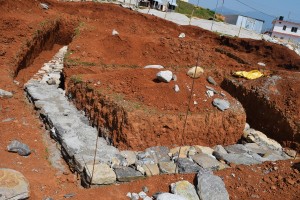
- Enforced vertically and horizontally
- Stabilizer will keep the wall in shape in the event of another natural disaster
- Use of corrugated tin to build temporary structures
- Provides safety throughout monsoon season
- Can be later used to build houses
- Prefabricated Toilets
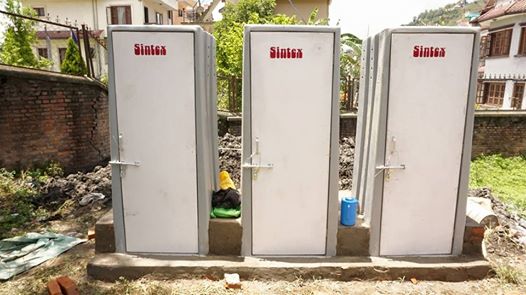
- Connected to 5,000 L self digesting tank
- Many refugee camps have no working toilets
- By increasing waste management, we decrease the risk of a typhoid or cholera epidemic
- Begin working with the Nepali government to help fund these rebuilding efforts
- One possible way to do this:
- Tourists are charged fees to visit the Langtang Valley
- Government could donate part of these fees to pay for the costs of the needed supplies
- One possible way to do this:
These potential immediate interventions are necessary for rural villages to survive, to start working towards restoring normalcy, and to fully rehabilitating from this earthquake. In the long term, our rebuilding efforts could potentially focus on:
- Building schools
- Currently children have to travel far away from their families to receive an education
- Having a school in the villages may increase the incentive to send your children to school
- Building a larger, district hospital that mirrors one that could be found in Kathmandu
- Limits the distance patients have to travel if they cannot be cared for by their local clinic
- Repairing hydropower plants
- Help to recover/generate energy for the district
- Creating jobs by building factories such as textile workshops
- Jobs that women can do
- Support female equality/rights/independence/freedom
How might we do this you ask?
- Community outreach/initiative
- Nepalis rebuilding Nepal
Exemplars:
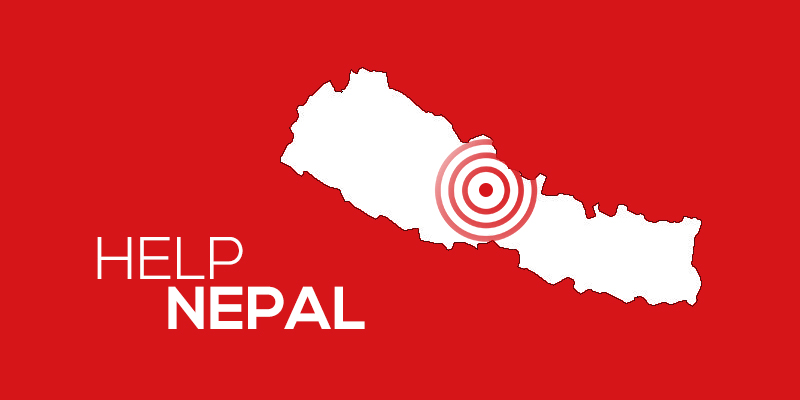
Click to see Social Story’s list of main NGO’s providing aid to Nepal
While there are approximately 40,000 NGOs in Nepal attempting to help provide aid to those impacted by the earthquake, many of them are having difficulty reaching the rural areas in need of assistance. These five examples, however, have successfully began to rebuild rural districts by successfully taking a vertical approach such as focusing on a certain fundraising aspect (i.e. fundraising for bundles of corrugated iron), and turning it into a diagonal approach that generates long term results (i.e. more sustainable, permanent houses). While each of these organizations focuses on different areas within the general rebuilding topic as well as on different rural districts, we believe that they are doing some of the best work in the field.
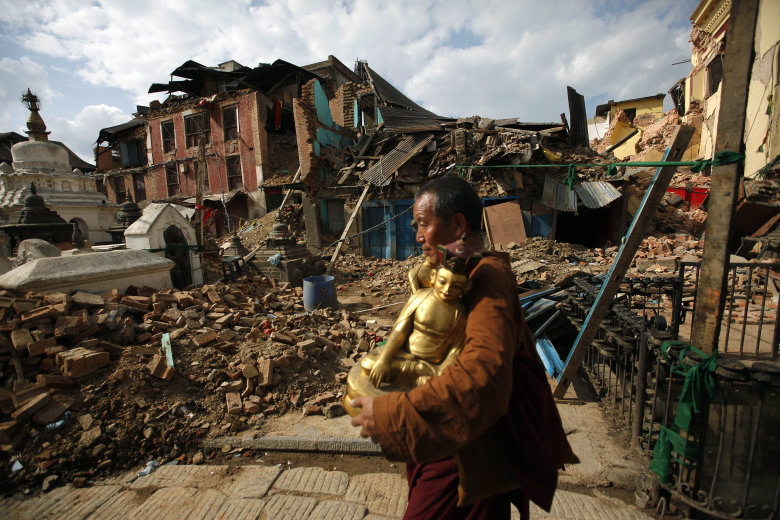
A Buddhist monk salvages a statue of a Buddhist deity from a monastery after it was damaged by the earthquake
- Cranbrook Explorers & Travelers Overseas Partnerships
- Established in 2001 with a desire to support families, villages, schools, and medical facilities in the Rasuwa District
- Key to their success has been their ability to provide funds directly to the villages
- Goal post earthquake:
- Short term: immediate relief
- In the form of: basic shelter, food, and access to health care and medical supplies
- Long Term: sustainable rebuilding of these shattered communities
- Short term: immediate relief
- Established in 2001 with a desire to support families, villages, schools, and medical facilities in the Rasuwa District
- Roofs for Rasuwa
- Team made up of volunteers from both CETOP and World Horizons
- Goal post earthquake: supply Rasuwa district with bundles of corrugated iron, medical supplies, and building materials
- Corrugated iron is an essential item to build stable but temporary structures to withstand the upcoming potential natural disasters
- 1 bundle = 8 sheets = 1 house
- Want to cover at least 1,400 households
- 1 bundle = 8 sheets = 1 house
- Corrugated iron is an essential item to build stable but temporary structures to withstand the upcoming potential natural disasters
- Miyamoto Relief
- Team composed of non-profit engineering experts that work globally to save lives through engineering
- Focus mainly in developing countries where engineering knowledge is critical for the life safety of communities
- The Miyamoto Relief team aims to provide engineering and construction expert advice quickly
- Ranging from assessing whether buildings are safe to re-enter, to developing a plan for rebuilding standards that will withstand the next large earthquake
- Team composed of non-profit engineering experts that work globally to save lives through engineering
- Possible Health
- A team focused on rebuilding the healthcare system in Rasuwa District where there is damaged infrastructure and a shortage of human capital
- Creating a system with resilience to resist any future natural disaster
- Stabilized rammed earth walls
- Ring beams on the top and bottom of every wall
- Wall and ring beam sit on cement mortared rubble foundation that is about 1 meter deep
- Roof is steel deck supported on steel beams
- Ideally, their system will be able to serve the poorest
- Working with Nepali government to ensure damaged hospitals and clinics get rebuilt using a resilient design
- Want to remain involved by managing the healthcare system in the region across hospitals, clinics, and community health workers
- Creating a system with resilience to resist any future natural disaster
- A team focused on rebuilding the healthcare system in Rasuwa District where there is damaged infrastructure and a shortage of human capital
- Rasuwa Relief
- Exists to provide post earthquake relief in both the immediate and long term to villages across the rural district of Rasuwa
- direct humanitarian assistance, expert consultation on location designations for structural rebuilding efforts, and ongoing collaborative support for the durable reconstruction of villages and human security
- Plans to dedicate 30-40% of resources for immediate disaster relief and the remaining will be dedicated to long term reconstruction
- Part of what makes Rasuwa Relief unique is that most members of their team were in Rasuwa at the time of the quake
- They don’t think of themselves as development professionals or agents of disaster relief, but, given their experience in the rural district, they feel compelled to act
- Results in a specific focus on working with Nepalis and supporting their efforts to rebuild
- Helping Nepali creativity, resilience, and ingenuity be used to rebuild Nepal in a sustainable and stable way
- Results in a specific focus on working with Nepalis and supporting their efforts to rebuild
- They don’t think of themselves as development professionals or agents of disaster relief, but, given their experience in the rural district, they feel compelled to act
- Exists to provide post earthquake relief in both the immediate and long term to villages across the rural district of Rasuwa
Discussion Questions:
- How can we improve the strength and design of the buildings in Nepal while maintaining the traditional tibetan culture that so many Nepalis hold close to their heart?
- How do we best take advantage of foreign aid while simultaneously not becoming a victim of the double edge sword?
- What is the best way to work with the government?
- How do we implement our possible interventions in a way that incorporates community members?
Additional Readings:
- Nepal Earthquakes exposes gaps in disaster preparedness
- Stunting in earthquake affected districts in Nepal
- Culture and The Environment in The Himalayas (chapter: Restoration and Revival: Remembering the Bagmati Civilization)
Additional Sources:
- We Corner People (film)
- Highway (film)
- Assessing Landslide Hazard in GIS (GIS case study on Rasuwa)
Works Cited:
- McCharles, Rick. “Langtang Village Destroyed by Avalanche.” Best Hikes Blog. Besthikes.com, 1 May 2015. Web. 19 Aug. 2015.
- “Miyamoto Global Disaster Relief.” Miyamoto Relief. 28 Apr. 2015. Web. 19 Aug. 2015.
- “Nepal – Infrastructure, Power, and Communications.” Nations Encyclopedia. Advameg. Web. 19 Aug. 2015.
- Pradhan, Riddhi. “Seismicity and Traditional Buildings of Kathmandu Valley, Nepal.” Icomos. Web. 19 Aug. 2015.
- “Rasuwa Relief: Updates on Our Work in Rasuwa.” Rasuwa Relief. WordPress, 22 May 2015. Web. 19 Aug. 2015.
- “Rebuilding Earthquake Resistant Healthcare Systems in Nepal.” Medium. Medium, 8 May 2015. Web. 19 Aug. 2015.
- Shrestha, Sahina. “Langtang Is Gone.” Nepali Times. Nepali Times, 1 May 2015. Web. 19 Aug. 2015.
- Sinha, Shreeya. “How to Rebuild After an Earthquake Like Nepal’s.” The New York Times. The New York Times, 13 May 2015. Web. 19 Aug. 2015.
- Wilkinson, Freddie. “Nepal Desperate for Helicopters to Reach Shattered Villages.” National Geographic. National Geographic Society, 8 May 2015. Web. 19 Aug. 2015.
